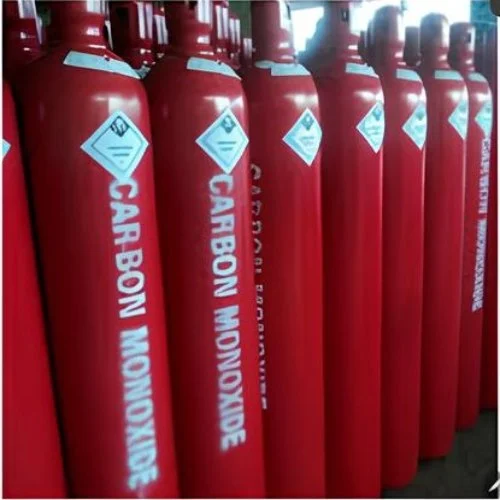Carbon monoxide (chemical formula CO) is a poisonous, flammable gas that is colorless, odorless, tasteless, and slightly less dense than air. Carbon monoxide consists of one carbon atom and one oxygen atom connected by a triple bond. It is the simplest carbon oxide. In coordination complexes, the carbon monoxide ligand is called carbonyl. It is a key ingredient in many processes in industrial chemistry.[5] The most common source of carbon monoxide is the partial combustion of carbon-containing compounds. Numerous environmental and biological sources generate carbon monoxide. In industry, carbon monoxide is important in the production of many compounds, including drugs, fragrances, and fuels.[6] Upon emission into the atmosphere, carbon monoxide affects several processes that contribute to climate change.[7] Indoors CO is one of the most acutely toxic contaminants affecting indoor air quality. CO may be emitted from tobacco smoke and generated from malfunctioning fuel burning stoves (wood, kerosene, natural gas, propane) and fuel burning heating systems (wood, oil, natural gas) and from blocked flues connected to these appliances.[8] Carbon monoxide poisoning is the most common type of fatal air poisoning in many countries.[9][8][10] Carbon monoxide has important biological roles across phylogenetic kingdoms. It is produced by many organisms, including humans. In mammalian physiology, carbon monoxide is a classical example of hormesis where low concentrations serve as an endogenous neurotransmitter (gasotransmitter) and high concentrations are toxic resulting in carbon monoxide poisoning. It is isoelectronic with both cyanide anion CN− and molecular nitrogen N2.

This is your website preview.
Currently it only shows your basic business info. Start adding relevant business details such as description, images and products or services to gain your customers attention by using Boost 360 android app / iOS App / web portal.


Submit Your Enquiry